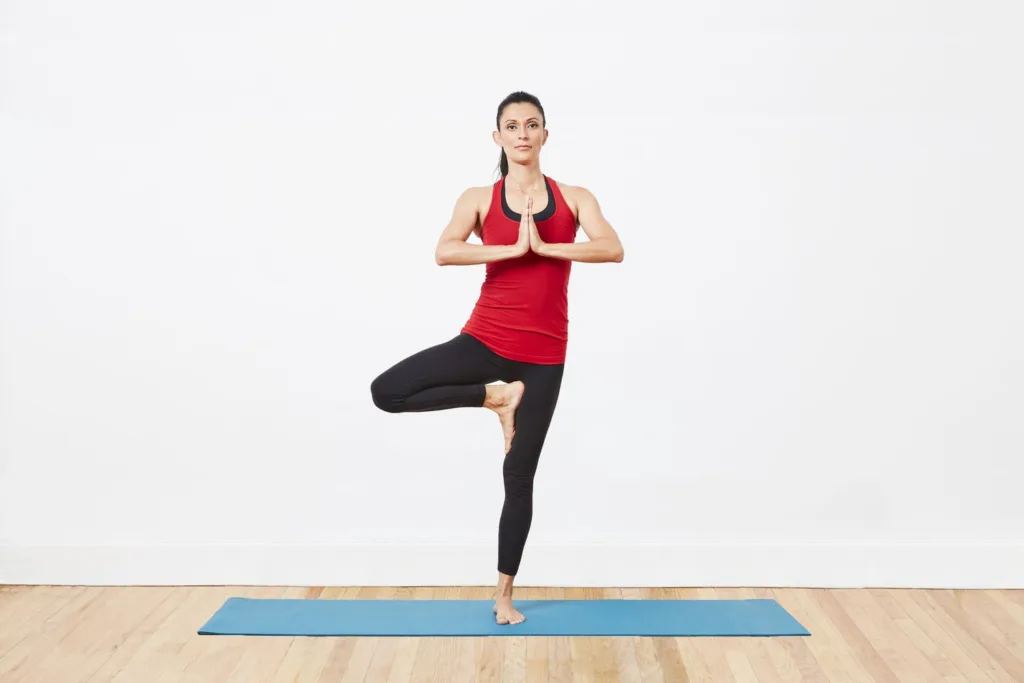This week in the world of sports science, here’s what happened…
- Can static stretching replace resistance training for building muscle?
- Consuming too much protein and too little fibre?
- Where should balance training be scheduled in a training session?
Can static stretching replace resistance training for building muscle?

Recently, Men’s Health published an article that has sparked a lot of online discussion. The article’s headline suggests that static stretching can be as effective as lifting weights when it comes to building muscle. This claim is based on a study that found static stretching to be just as beneficial as resistance training in building muscle thickness.
The study involved three groups: a static stretching group, a resistance training group, and a control group. The static stretching group performed a continuous 15-minute stretch of the pectoralis major muscle four days a week for eight weeks. The resistance training group, on the other hand, trained three days per week over the same period, performing five sets of 10-12 reps of a pectoralis major exercise. The study found no significant difference in isometric maximum strength, muscle thickness, and range of motion between the two groups.
However, there are some practical limitations to consider in this study. It only focused on the pectoralis major muscle, and it’s unrealistic to stretch one muscle group for 15 minutes at a time. Additionally, a specialised stretching board was used, which is not accessible to everyone. While Men’s Health provided a respectable summary of the study, its headline may have misled some people. Nonetheless, exploring the idea of stretch-mediated hypertrophy is a promising avenue for future research. But for now, it’s not advisable to replace resistance training with static stretching if your goal is to build muscle.
Consuming too much protein and too little fibre?

Last week, an article was published by Vox that caught my attention. It addressed the issue of protein consumption in our diets. According to the article, 60% of US adults are trying to increase their protein intake. However, the article suggests that increasing protein consumption may not necessarily be a good thing. It argues that animal-based protein may increase the risk of heart disease and cancer. In addition, the negative impact of excess animal-based protein consumption on the environment was also discussed. While the viewpoints expressed in the article are worth considering, they may scare people away from consuming protein altogether. If you want to know how much protein you should consume without overdoing it, we have an excellent blog: How Much Protein Do Athletes Really Need?
Despite the article’s bias towards plant-based diets, it did highlight the importance of fibre. Shockingly, only 7% of Americans get enough fibre in their diet. Fiber has many benefits, such as reducing cholesterol and inflammation, improving gut health, and lowering the risk of stroke, hypertension, heart disease, and cancer.
If you are interested in the animal vs. plant-based protein debate or want to learn more about the importance of fibre, I recommend checking out this article!
Where should balance training be scheduled in a training session?

Balance training is often recommended to prevent injuries. It is usually performed at the beginning of a training session or incorporated as part of the warm-up. This is because it is believed that performing balance training when you are unfatigued is more effective than doing it when you are fatigued. However, some argue that injuries are more likely to occur when you are tired and that training balance in a fatigued state is superior.
A very interesting study was published this week that investigated the best time to perform balance training during a training session. The study involved participants who were divided into three groups. Each group received six weeks of balance training. One group did only balance tasks and jumps, while the other two groups did the same balance tasks and jumps either before (when they unfatigued) or after (when they fatigued) high-intensity interval training.
The study found that all three groups improved their balance. However, balance training before high-intensity interval training resulted in greater improvements than balance training after high-intensity interval training.
Therefore, based on the findings of this study, it is suggested to perform balance training at the beginning of a training session or when you are not tired to fully benefit from the improvements.
From us this week:
>> New course: Enhancing Performance in Hockey
>> New podcast: Elite Ice Hockey Training Secrets
>> New infographic: Can Heavy Squats Induce Post-Activation Potentiation Enhancement In Muay Thai
>> New article: 15 Best Barbells For Home Gyms
Access to a growing library of sports science courses
SFS Academy is an all-access membership to premium sports science education.
With SFS Academy, you’ll learn from some of the best coaches around the world as they teach you how to apply the latest research and practice with your athletes.
Get instant access when you join today on a 7-day free trial.




